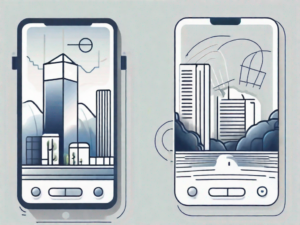
Learn how AppSignal makes application performance monitoring easy for your Ruby, Elixir, Node.js, frontend JavaScript, and Python projects.

Learn how AppSignal makes application performance monitoring easy for your Ruby, Elixir, Node.js, frontend JavaScript, and Python projects.

This article offers a comparison between Baby AGI and AutoGPT, providing insights into their functionalities, applications, and differences.

In this article, we’ll explore some popular Redux alternatives, each offering unique features and benefits that cater to different use cases.

Ampere Porting Advisor offers a streamlined migration process, allowing developers to save time and effort and automate manual steps involved in porting code.

Learn how to navigate through a React application with multiple views with React Router, the de facto standard routing library for React.

React Error Boundary is a crucial concept to understand. This article introduces error boundaries and how to effectively implement them.

Discover the key differences between React and React Native, and weigh the pros and cons of these open-source JavaScript libraries.

In this comparison of LlamaIndex vs LangChain, we'll help you understand the capabilities of these two remarkable tools.

Learn how to use the Fetch API — a simpler, easier, promise-based alternative to XMLHttpRequest — with Node.js, Deno and Bun.

Learn about the essential components of LangChain — agents, models, chunks, chains — and how to harness the power of LangChain in JavaScript.

Learn how to maximize web app efficiency by harnessing prefetching, memoization, concurrent fetching, and lazy loading techniques.

By combining the versatility of Node.js with the robustness of SQL Server, you can harness the advantages of both technologies.

This introduction will walk you through working with SVGs in React, discussing their benefits, and how to animate and manipulate them.

By the end of this post, you’ll have a solid understanding of how environment variables can make your life as a Node.js developer easier.

Learn simple ways to style the HTML details element, which is a very useful element for revealing and hiding bits of content on a web page.

Learn about the features of UPDF, a PDF tool that harnesses the power of AI to allow you to work with PDFs in exciting new ways.

Learn how global travel IT company Amadeus migrated to Ampere Altra instances on Azure for up to 20% higher raw throughput and 50% better performance/price.

In this guide, we’ll take you through the process of how to install Node on Debian, ensuring you have the right tools at hand.

Learn what caching is, its benefits, how to set up caching in Django, the backend systems Django supports, and caching best practices.

Learn about Telerik's Progress Design System, an end-to-end design language for creating simple, intuitive and beautiful experiences.

Learn about decorators in JavaScript: what they are, how they work, what they're useful for, their pros and cons, and how to use them.

In this guide, we'll walk you through the process of installing Node on Ubuntu, a popular Linux distribution, using three different methods.

This article provides you with a comprehensive comparison of .NET and Node, based on factors such as performance, scalability, and security.

We compare Azure DevOps and GitHub, looking at core features, strengths, and weaknesses, and which is best suited for your organization.

Learn how Kubernetes can be used by developers to improve the reliability, productivity, scalability, and portability of containerized apps.

Learn how to leverage the OpenAI API and a cloud function to create an application that identifies spelling errors and understands context.

Steve shows you how to create polymorphic components: single adaptable components that can represent different HTML elements in TypeScript.

Need to remove an image background? Learn seven ways to remove a background in Photoshop, depending on the kind of image you're working with.

Explore the pros and cons of using WooCommerce vs Shopify, two popular ecommerce platforms for running an online ecommerce store.

Learn about the most fundamental and important aspects of web accessibility, and the tools for ensuring the Web is accessible to everyone.